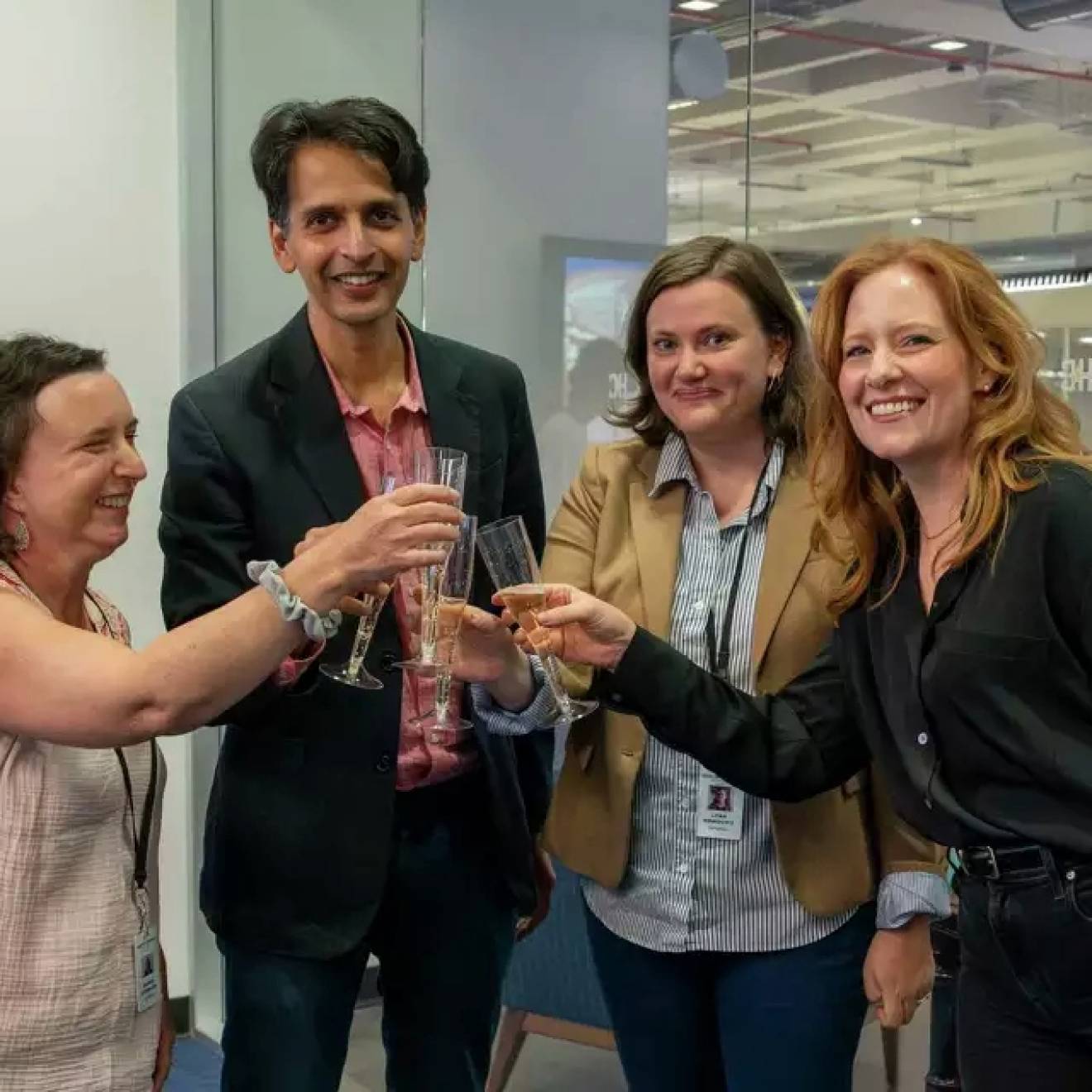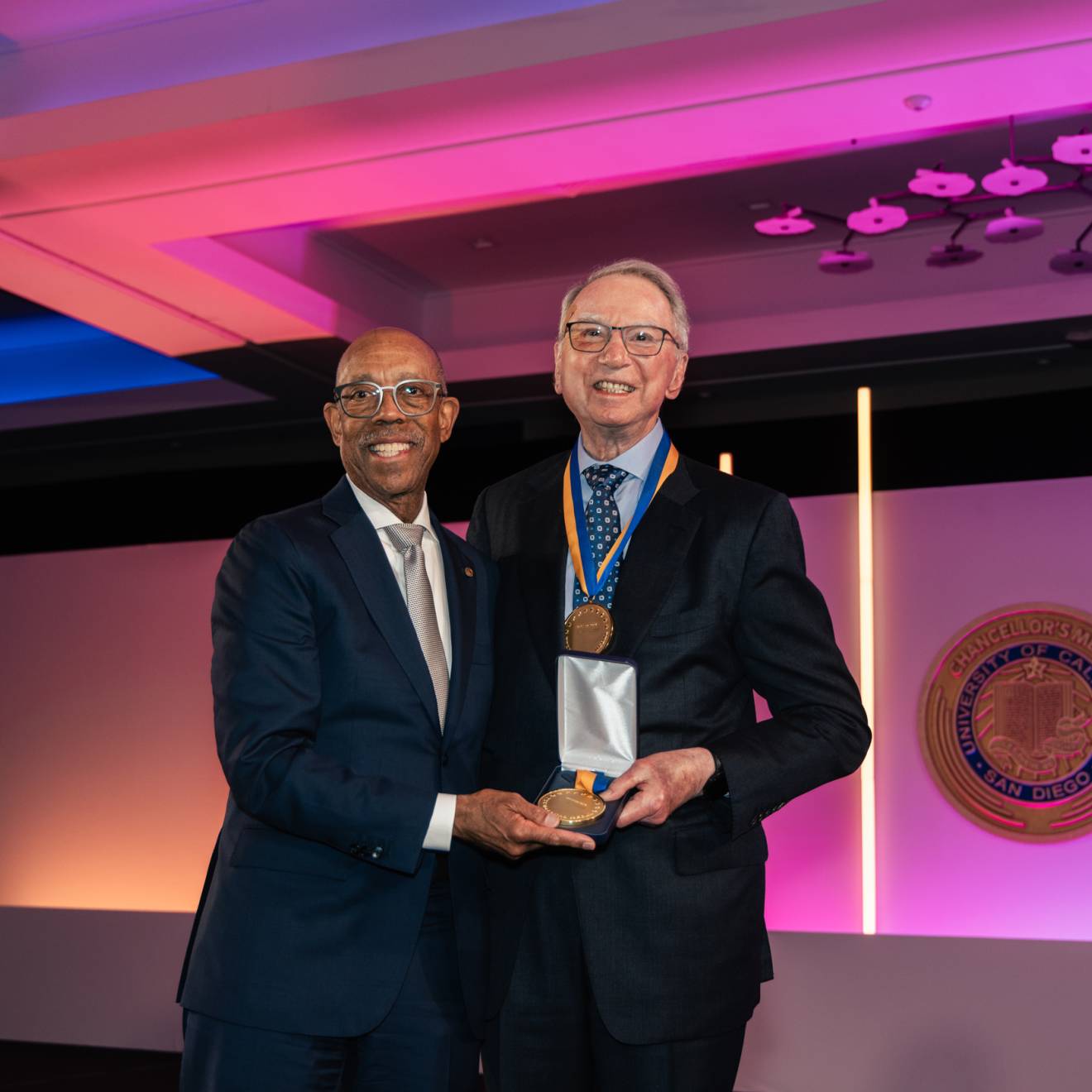Sarah Fullerton, UC Berkeley
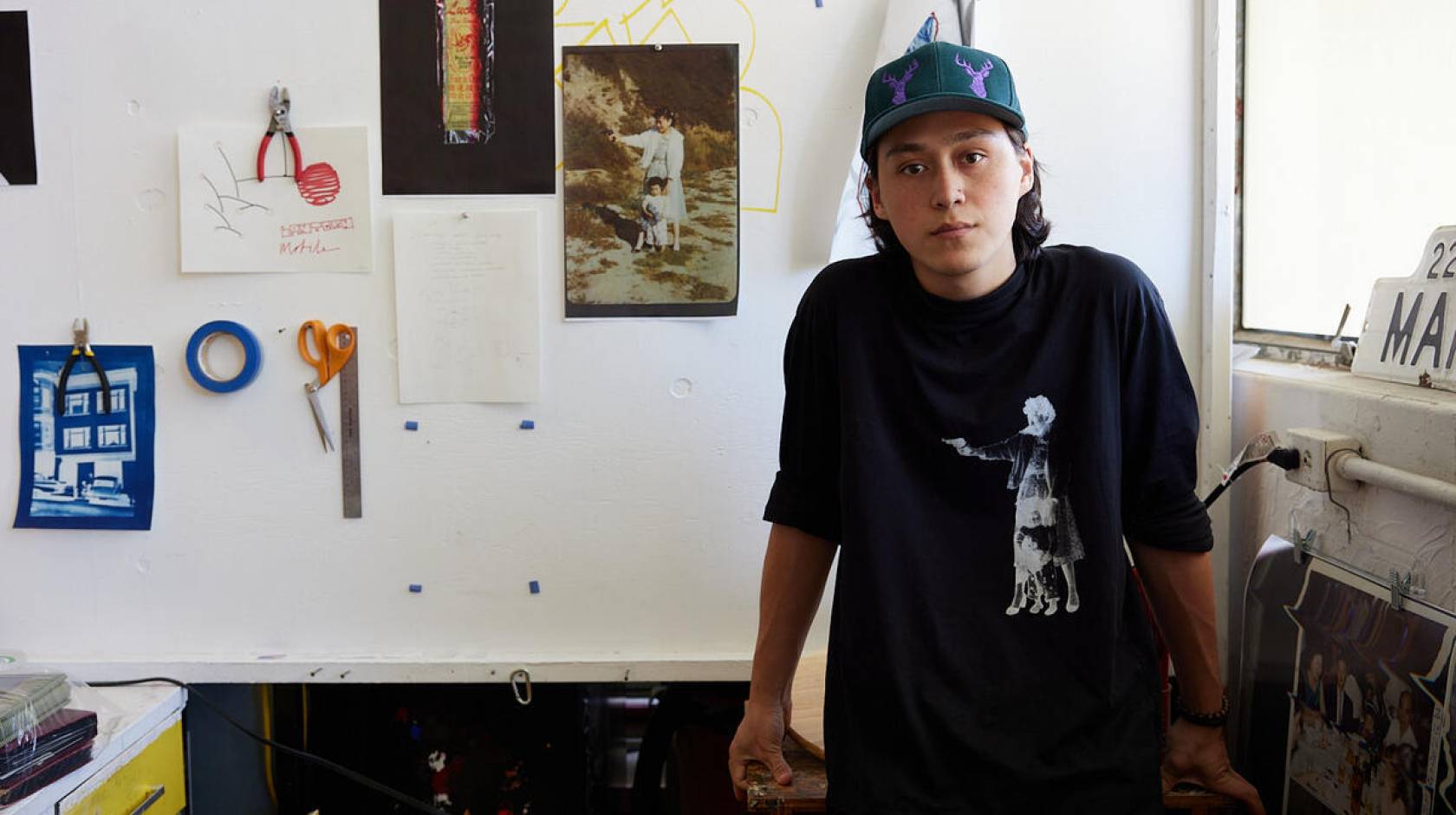
Each year, nine seniors in the Department of Art Practice are selected to receive an honors studio for their final semester. Each student receives their own studio space with 24/7 access. The studio space allows students to work on longer-term projects and explore new mediums alongside their cohort.
UC Berkeley Arts & Humanities spoke with one of the 2023 honors studio artists, Jacob Li Rosenberg, as he completed his final project for Professor Stephanie Syjuco's Art + Archive class. Rosenberg will graduate with a degree in Art Practice in spring of 2023.
Arts & Humanities: How did you decide to come to Berkeley and study art practice? Did you always know you wanted to study art?
Jacob Li Rosenberg: I am originally from Madison, Wisconsin, though both of my parents grew up in the Bay Area. My mom’s family immigrated from China to San Francisco. And my dad's family are Jewish immigrants from Eastern Europe who ended up in New York but then came to the Bay Area. I grew up traveling back and forth to the Bay Area to visit family, so it was sort of like a second home to me.
I knew I wanted to apply to Berkeley because of this connection to the Bay Area, but I didn't exactly expect to get in. I originally applied to architecture because I had become aware of Ronald Rael’s work. Actually, the summer before my freshman year, I had the opportunity to drive a cross-country road trip with a few of my high school friends. And we were driving through Colorado and I was able to contact Ronald Rael because I knew he worked in Colorado on his family property. He said we were welcome to come by, and I saw the 3D-printed Adobe structures. And I was just, I was fascinated, because it was architecture, but it was also very much like an art Installation. That was really amazing to me to see someone merging those two practices in a very new and relevant way.
Both my parents are actually artists — my dad does a lot of video and performance work, and ceramics as well. And my mom is a dancer. They were my main art teachers growing up. Art was always something I felt like I really loved, but I was never really sure if I'd pursue art. The only professional artists that I was around, you know, they would talk about how hard it was for them. Right? You know, making it past college and working professionally. So, I came to Berkeley as an architecture major, and I took some art classes my freshman year, and I just fell in love with my art classes right away.
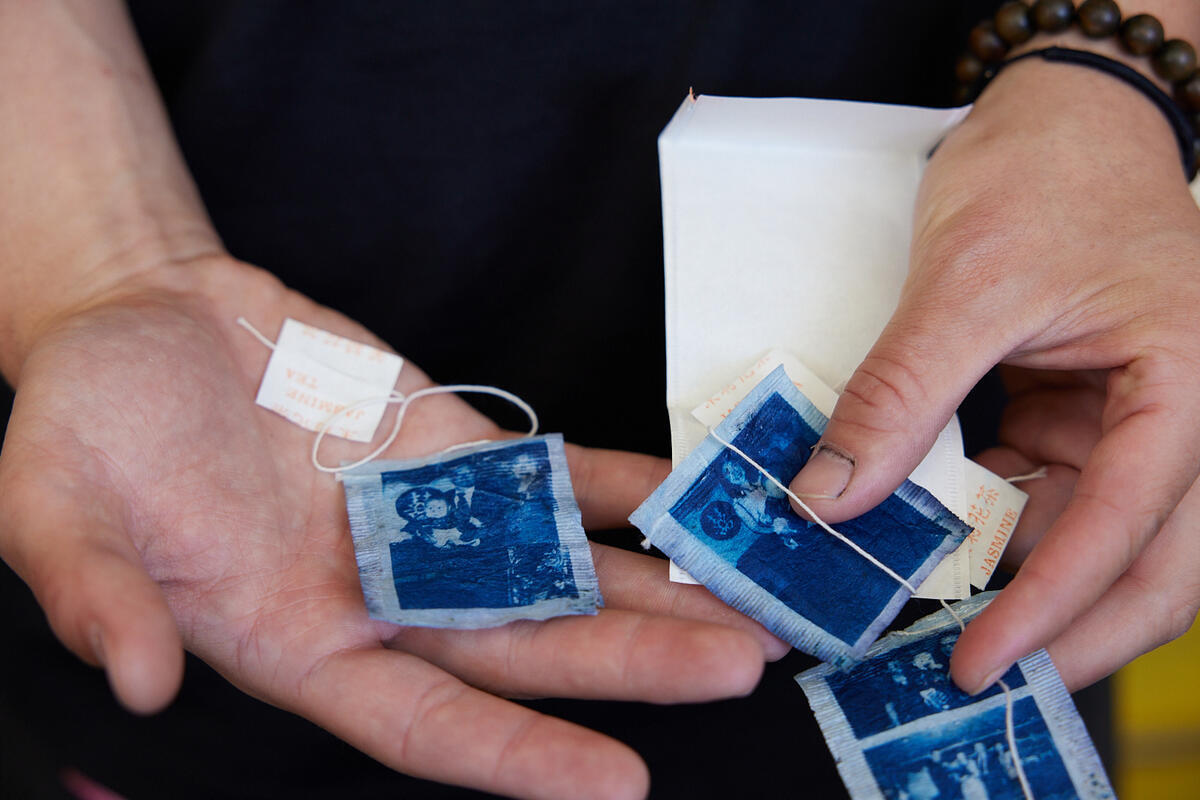
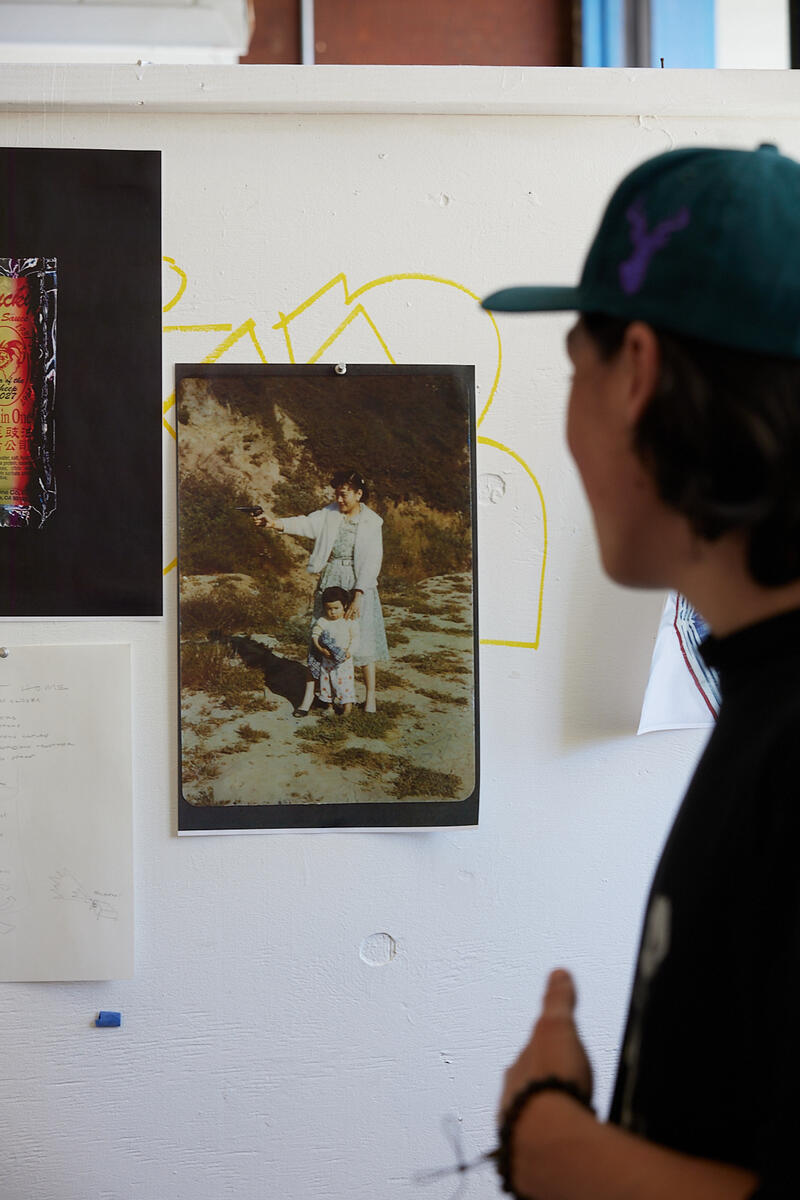
Jacob Li Rosenberg views source photos on the wall of his honors studio.
A&H: What has been your experience in the Art Practice Department? What were your first impressions?
JLR: I really appreciated the conceptual nature of the department. This was definitely one of the biggest draws for me as well as teachers like Stephanie Syjuco and my first art professor Craig Nagasawa, who is a drawing professor. Coming to this department and having teachers who looked like me was really new at the time. Growing up in Madison, Wisconsin, I didn't even have an Asian teacher whatsoever, let alone an Asian art teacher. So having teachers like, right off the bat, from a similar background to me, making work and talking about their diasporic history — It was just really inspiring and made me want to stay in that community.
A&H: You are one of nine undergraduate students selected to receive an honors studio, which provides you with a studio space, 24/7, for your final semester. How has that changed your practice?
JLR: In the process of moving out, I’ve been reflecting on how great this space has been. The biggest thing for me since I don't work in a specific medium, was having enough space to explore. I really found a love for installation while in this space. And within that, it's been so nice to have space to have a creative lab where I'm working with all of my peers who are also making amazing work.
Because of the studio community we have here, I just had the opportunity to have constant critique and feedback from people whenever I wanted it — and vice versa, I was able to collaborate with my cohort and give them feedback. It's been incredibly beneficial to my practice, getting to talk about other people's work. Even if I didn't have something specific to work on, I would just come to the studio because I felt like I was going to at least give myself the opportunity to do something that day. And even if I just had conversations that day, or just sat here and had my lunch and went home, or looked at what other people were doing, I was being productive in my practice. I think it allowed me to treat myself like I was an artist.
A&H: Can you describe your final project for your Art & Archive class with Stephanie Syjuco? What are we seeing in the images of your works in the studio?
JLR: Over the course of this semester, I was working with family photo archives — photo albums that I have been collecting from going over to my family's house. I have two from my mom's side of the family and one from my dad's side. I grew up so far away from family, I really didn't get to know them very well until pretty recently, and I'm still trying to get to know them. This class was actually a really good opportunity to learn more about their background and their history.
And so a lot of the process was just flipping through these photo albums and trying to understand what was going on in these pictures. And that's what you photographed me in front of — that photo is of my grandmother shooting a gun at a range with a toddler standing near her. It was such an interesting experience to like, be flipping through the book and see that picture, embedded with a bunch of other photos of her holding my aunt as a child or them out at dinner. And, you know, I've only gotten to know her in her 80s and 90s and our communication is limited because she doesn't speak much English. And so like, seeing something like this was like, Oh my gosh, like, she has such a history and personality. She's such a character. And I had no idea.
This whole project was just trying to highlight some of these moments in my family's history that I never got to experience and that I'm now experiencing secondhand through these photos. I’ve been collaging these moments on my wall, like an installation in my space. I also have a large blown-up photo, a film photo, that I took of my grandmother pretty recently. And so I had that juxtaposed next to these older photos that were taken by my grandfather.
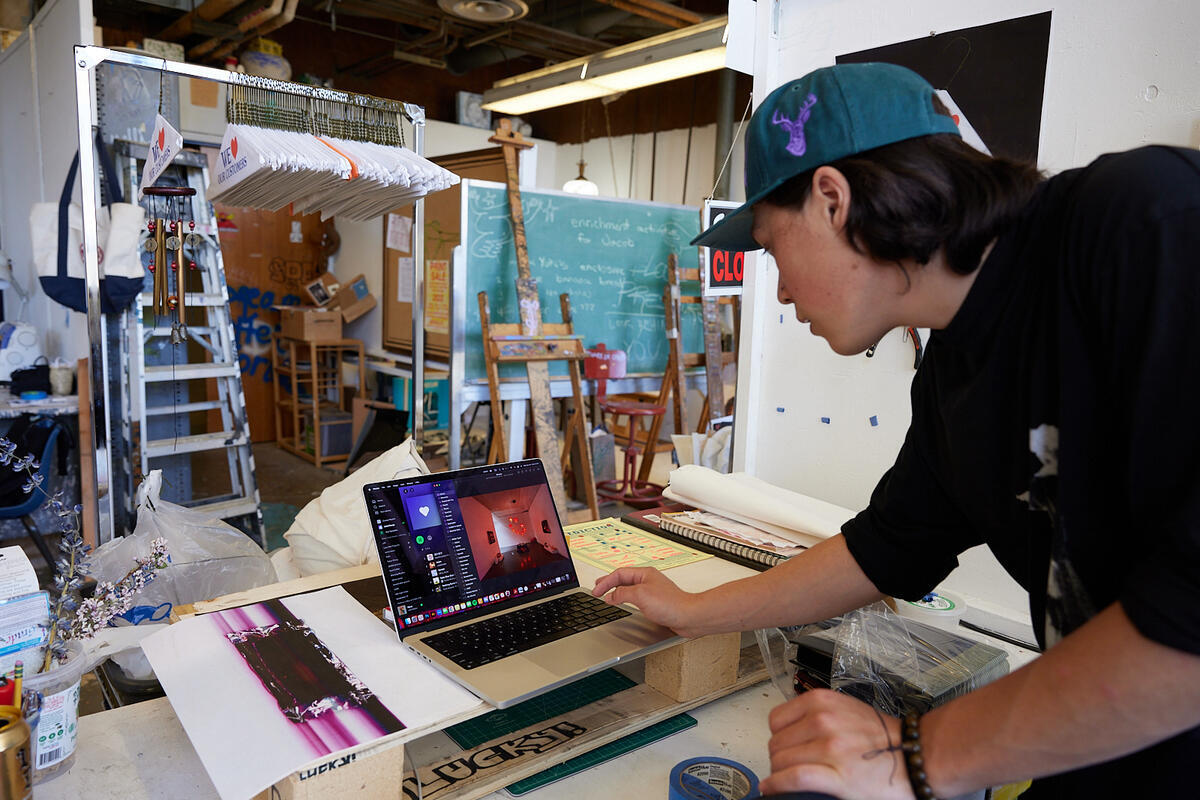
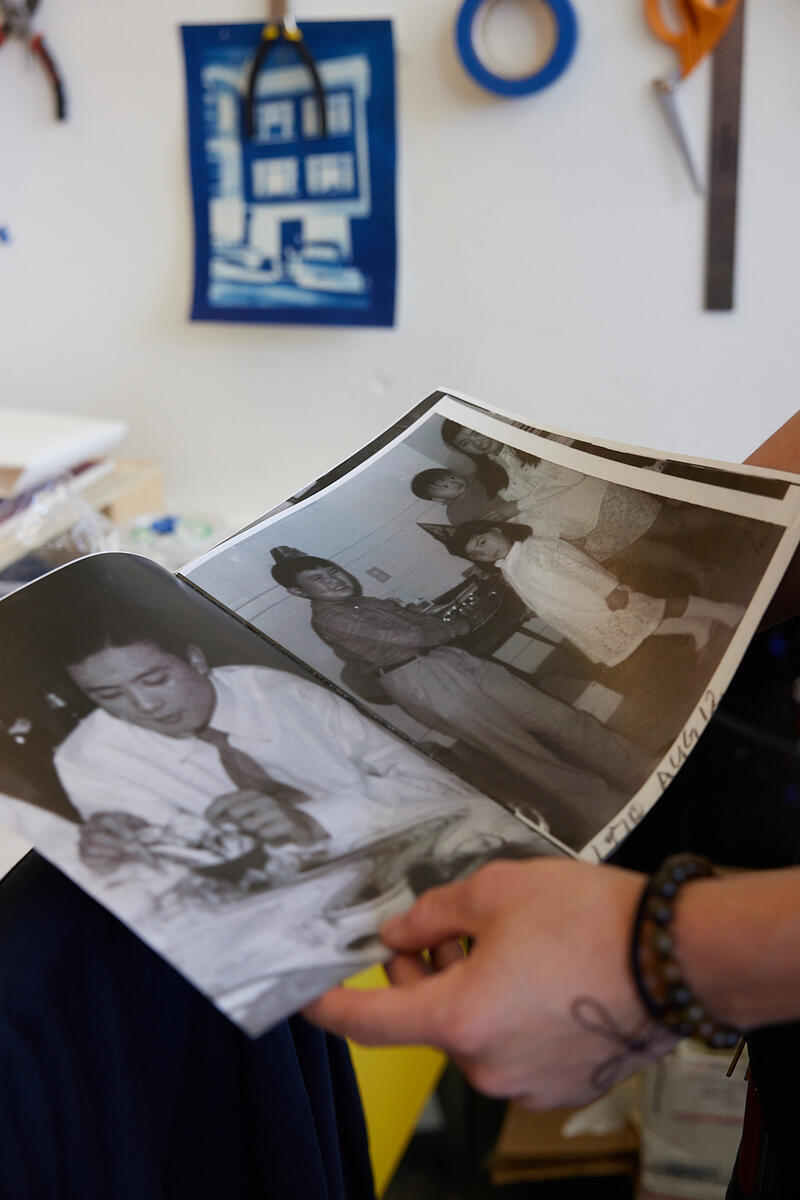
Artist Jacob Li Rosenberg holding family source material.
The archive part of this class helped to resurface some of these photographs because these family photo albums have been closed for I don't even know how long and were just buried under piles of other things in my family's living rooms. I'm really excited to share the photos that I've brought back to life a little bit. This final project felt like a really good way to round everything off. Because, coming to Berkeley was, for me, a big part of it was to be close to family. And so it feels like a full-circle moment.
A&H: What are your post-graduation plans?
JLR: I'm going to move even closer to my family in San Francisco. I'm hoping to continue pursuing art and I definitely want to apply for residencies and shows. I loved our Honors show, I hope to have the opportunity to show with these lovely people again. Over the past couple of years, I've been working as a studio assistant for a couple of artists. That's definitely some work I would enjoy continuing to do. I want to immerse myself in the arts community outside of the university. I've been so blessed to have this community at Berkeley, but I know that there is an art world outside of this as well. And I would love to be a part of that.
